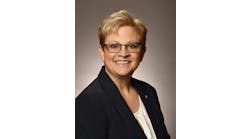At many health insurer organizations across the U.S., the legacy mainframe technology systems that have been in place are becoming innovation bottlenecks, resulting in payers, providers and patients not being able to benefit from health data in the most efficient way possible.
Realizing that these barriers were stifling innovation, the leaders at Cambia Health Solutions, a Portland, Ore.-based enterprise that includes more than 20 companies—and which is the parent company of Regence, a member of the Blue Cross Blue Shield Association operating in Oregon, Idaho, Utah, and Washington—have formed several technology partnerships over the years, with a plethora of forward-thinking goals in mind; one being to create a more personalized healthcare experience for its members.
For example, earlier this summer, Cambia announced that it would be continuing to invest in Abacus Insights, a Boston-headquarters data integration and interoperability platform that reconciles thousands of unique attributes about individual consumers and their health that legacy systems simply cannot, officials of the healthcare solutions company contend.
Cambia, which serves 3 million members, and whose portfolio of 20 diversified companies includes six in the health insurance space, and four under the Blue Cross Blue Shield brand, was founded more than 100 years ago when timber workers in the mountains of Tacoma, Wash., decided to pool their wages together in case one of them experienced injury or sickness. The workers asked their employer to manage the benefits on behalf of their colleagues and friends who could get hurt in this high-risk job category.
“We love the entrepreneurial side [of the industry], and this ultimately translated into the first employer-based health plan,” explains Laurent Rotival, the chief information officer and senior vice president of strategic technology solutions at Cambia Health Solutions. Rotival, who is broadly responsible for the overall digital transformation of the company—moving it from a monolithic state-centric health plan to a consumer solutions organization—recently spoke with Managing Editor Rajiv Leventhal about Cambia’s recent technology investments, the pandemic’s impact on health data, and how the federal government’s interoperability regulations will impact the future of healthcare. Below are excerpts of that interview.
From your perspective, where do the biggest gaps lie in terms of how health plans are able to both leverage and share key patient data?
Historically, there have been both technical and trust challenges between payer systems and their provider partners. Despite the “P” in HIPAA and the OCR’s documented right that an individual has a right to their records—whether it’s claims data or clinical data—that data is still very difficult for a person to access. So you have two different dimensions: the ability to serve those people and the ability of a health plan like ours, for example, to not only serve them by understanding their claims history—which we do have access to—but also having access to consumer data, [meaning] their clinical data from the various provider systems they have participated in, their lab data, potentially their external third-party pharmacy data, and quasi real-time ADT data. All of that has been very complex.
Despite extensive documentation of standards for that data through HL7 International, there has been very limited adoption of those standards, and there has been a number of very large carrier platforms that are intermediaries and sort of have a lock on managing all the pipes and interchange of that data. Every data agreement is customized and every relationship is customized; the data isn’t complete, identifiers are all over the place—without a national identifier for individuals—and that creates a level of complexity that ultimately leads us to custom solutions for every use case. That use case [could be] simply aggregating an individual’s record from the claims and clinical basics, or running a predictive risk analysis to profile our population to understand who the highest-risk members are, or the ability to mobilize a personalized outreach via our case management team. So it’s been very complex and custom, and the lead time both from a technical, legal and compliance standpoint has been significant.
Can you discuss your partnership with Abacus Insights and what your specific goals are?
We [set out] to identify what it is that we need to serve people on a personalized level and truly understand them. While we had access to claims data within the four [Pacific Northwest] states, we knew we needed far more information. [That information] could be applying SDOH [social determinants of health] insights or applying advanced predictive modeling, but we needed to have access to a bulk of data that was outside the traditional walls of our health plan enterprise. We started initially by building an on-premise infrastructure, but because of the complexity involved in that, we quickly discovered that it would be too much effort to manage on our own.
Of course, all health plans have the same needs, so we thought it would be really valuable to join forces with a set of other health plans, and also co-invest in a third-party entrepreneurial-based organization that could move fast and attract the talent that one expects on the digital health side, and do so in a way so they could build reusable libraries of connectors to all the various organization out there.
There are some [900] payers in the country, 240,000 physician offices, 6,000 hospitals and integrated delivery networks, and 180,000 digital health platforms, so for us to build custom connectors to any one of those combinations on a unique basis for Cambia didn’t make sense. Working with an organization that would embrace the latest and greatest technologies from the cloud, one that had a healthcare DNA, understanding the privacy and security sensitivities for individuals, and that could ensure this same group of individuals would be able to build an inventory and library of connectors that we would require—but could also be reused by other health plans—would be a real gamechanger.
Can you discuss how the COVID-19 pandemic has specifically highlighted the critical importance of reliable health data in managing disease and patient care?
The crisis has moved everything virtually, and the good news is that many of us have already been investing significantly in this space, but it’s exacerbated the need to create solutions that make care accessible anywhere at any time. It’s also exacerbated the friction that’s in the current healthcare infrastructure. The focus on consumer experience, and making it as frictionless as possible, as well as making sure individuals are receiving the care and resources they need, and not be bombarded by a 100 different point solutions, is really important. People are struggling to access care from both primary care and behavioral health standpoints, so how we can identify those individuals proactively, understand who they are, where they are, and what care is required, and then reach out to them proactively with a cleanly targeted set of services that are more likely to satisfy their needs now, is what we’re trying to solve for. And all of this comes down to having the most complete, refreshed set of data on those individuals.
Through the ingestion of the data, we have touched on is basically run internal member identification algorithms allowing us to identify an individual’s risk. We have about 70 models from cardiac to SDOH identification, to risk profiling for being COVID-19 positive, to geographical risk, to readmissions risk, etc., and we run these models on a daily basis with our population. With COVID, we are now also ingesting data sets coming from the testing centers in the four states we operate in, from the public health authorities, and also from the various hospitals with whom we have partnerships that are primarily focused on our primary care populations.
That data is combined with our historical data; we feed it into our 70-model system, and every day we come out with a risk profile by member, which is prioritized based on those risks and teed up to our nurse-staffed case management team, which then looks up the historical data and longitudinal health records, and then based on that profile, they create a call list every day and reach out to individuals. The great advantage of that is that not only do we have a better sense on a daily basis of peoples’ risk profiles, but now our nurses need the minimal amount of time to ask questions to individuals since they already have the data and have already prepared for that call. So they can then really focus on a very compassionate and personal conversation that is non-clinical, non-technical and non-financial to validate if the risk profiles from the predictive models actually correlate to a real situation. If they do, they can then spend their time talking about potential recommendations.
The CMS final rule on interoperability and patient access puts the onus on health plans to be much better at providing patients with easy access to their claims data. How did these regulations land for you?
We’re very excited about this. We’re founding and board members of two alliances—one being the CARIN Alliance, which is focused on the individual’s right to access that record through a machine readable resource—so in this case HL7’s FHIR APIs, which were codified into the CMS rules. We were part of the effort to help advocate for this for the last four or five years. The second workgroup we’re involved with is the HL7 Da Vinci Project, focused on defining on HL7 FHIR use cases for payer-provider partnerships, particularly for those moving away from fee-for-service to value-based care.
We [recently] announced we were one of the first payer-providers to go into production with SMART on FHIR protocols between MultiCare of Tacoma, Regence, and Oregon Health & Science University. So we are mobilizing, not just to be compliant by Jan. 1, but we’re looking to solve this at a member experiential level. We want to ensure that starting Jan. 1, a member using their Regence iOS-powered mobile app, for instance, can immediately understand their records, understand through a workflow what they need to do to download their claims data onto their iPhone, and also make sure they know they have a right to direct that data to a third-party of their choice. I think there’s going to be an extraordinary explosion of innovation that will be completely untethered from the legacy health IT players. Everyone will need to step up and play.


